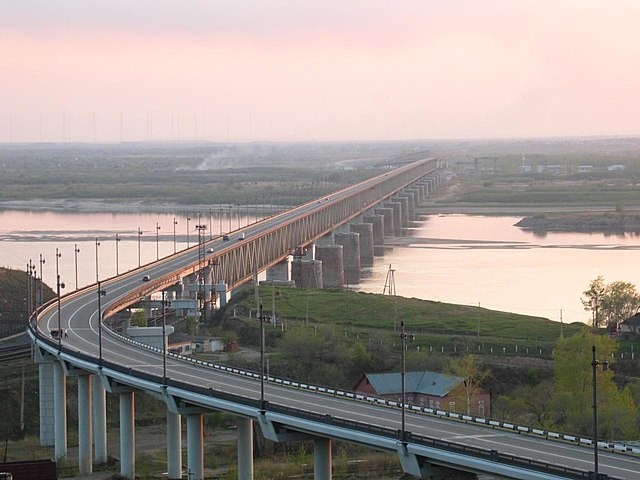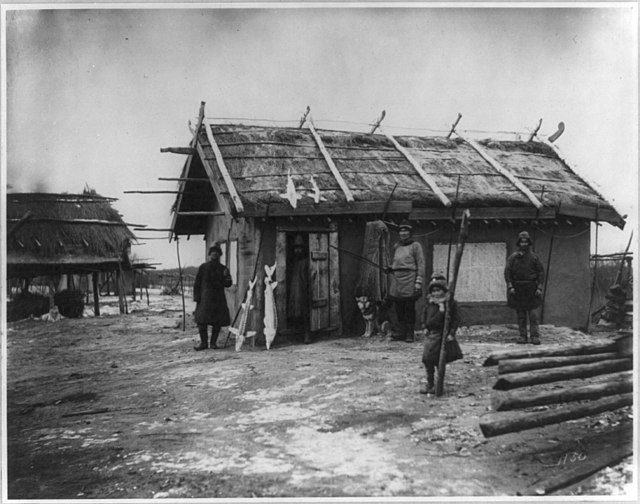The Amur River or Heilong River is a perennial river in Northeast Asia, forming the natural border between the Russian Far East and Northeast China. The Amur proper is 2,824 km (1,755 mi) long, and has a drainage basin of 1,855,000 km2 (716,000 sq mi). If including its main stem tributary, the Argun, the Amur is 4,444 km (2,761 mi) long, making it the world's tenth longest river.
Amur
Khabarovsk Bridge across the Amur used to be the longest in Imperial Russia and Eurasia.
Nanai village along the Amur, north of Khabarovsk, 1895
Nanai men with dog sled on the Amur, 1895
The Russian Far East is a region in Northeast Asia. It is the easternmost part of Russia and the Asian continent; and is administered as a part of the Far Eastern Federal District, which is located between Lake Baikal in eastern Siberia and the Pacific Ocean. The area's largest city is Khabarovsk, followed by Vladivostok. The region shares land borders with the countries of Mongolia, China, and North Korea to its south, as well as maritime boundaries with Japan to its southeast, and with the United States along the Bering Strait to its northeast.
Sikhote-Alin is the home to Amur tigers
On the Amur in Khabarovsk
Koryaksky volcano in Kamchatka
Vladivostok in the early 1900s








